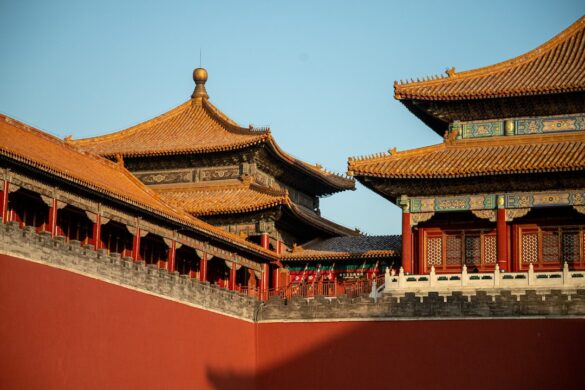Unveiling the Mystery of Beijing’s Silk Road Heritage
The ancient Silk Road, with its intricate network of trade routes, has long been a source of fascination for historians and adventurers alike. Stretching from Asia to Europe, this renowned path facilitated the exchange of goods, ideas, and cultures between the East and the West. While many of the key cities along the Silk Road have left visible traces of their heritage, such as Samarkand, Kashgar, and Dunhuang, one city that often goes overlooked is Beijing. Unbeknownst to many, the Chinese capital too has its own Silk Road heritage, and in this blog post, we will unveil the mystery surrounding it.
Beijing, known as “Da Du” or the Great Capital during the Ming and Qing dynasties, served as a vital junction and endpoint for several Silk Road routes. Despite being situated far from the central trade routes, the city played a significant role in the cultural and economic exchange between China and the Western world. The Silk Road extended into Beijing through a series of smaller trade routes, carrying exotic goods and bringing foreign influences to the imperial city.
To gain a deeper understanding of Beijing’s Silk Road heritage, one must venture beyond the bustling city center and explore the outskirts where traces of this historical connection can still be found. One such place is the Fragrant Hills Park, located west of Beijing. It was here that caravans from the Silk Road would rest and recuperate before continuing their journey. The park’s architecture and layout reflect the influence of Central Asian and Persian styles, providing a glimpse into the multicultural nature of the Silk Road.
Another significant site is the Temple of Azure Clouds, nestled within the Western Hills. This temple, dating back to the 14th century, was home to foreign monks and scholars who traveled to China along the Silk Road. Its unique blend of Chinese and Western architectural elements showcases the impact of cultural exchange that occurred during this period. The Temple of Azure Clouds remains an important religious and historical site that symbolizes the cross-pollination of ideas between East and West.
Moving closer to the heart of Beijing, the Silk Street Market, also known as Xiushui Street, offers a modern-day glimpse into the city’s Silk Road past. Originally founded as a bazaar during the Yuan Dynasty, it has since transformed into a bustling marketplace for silk, textiles, and other traditional Chinese goods. While it may no longer serve as a hub for international trade, the Silk Street Market stands as a testament to Beijing’s enduring connection to the Silk Road.
Beyond these physical remnants, Beijing’s Silk Road heritage is also embedded in its intangible cultural heritage. Traditional Chinese opera, for example, incorporated elements from different cultures that passed through the Silk Road. The Peking Opera, which emerged in Beijing during the Qing Dynasty, embodies this unique fusion of cultural influences. With its vibrant costumes, distinct vocal style, and elaborate makeup, Peking Opera showcases the artistic exchange that took place along the Silk Road.
Moreover, the culinary traditions of Beijing also bear the mark of Silk Road influences. Lamb dishes, noodles, and spices like cumin, all synonymous with Central Asian cuisine, have become integral parts of Beijing’s culinary repertoire. Restaurants across the city continue to serve these flavors, providing locals and visitors with a taste of the Silk Road’s gastronomic offerings.
Unveiling the mystery of Beijing’s Silk Road heritage is a reminder of the city’s role as a cultural crossroads. Though not as prominent as other Silk Road cities, Beijing was a vital link in the historical exchange and development of ideas and goods. By exploring its physical sites and experiencing its cultural traditions, visitors can uncover the rich tapestry of Beijing’s Silk Road heritage, an enduring testament to the power of cross-cultural connections and historical exchange.

